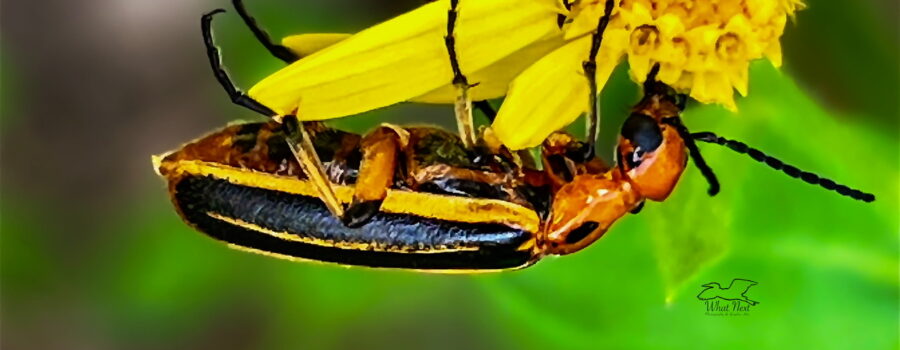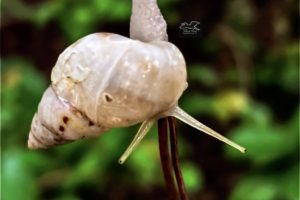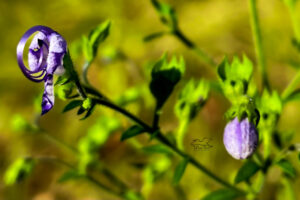Blister Beetles are Beautiful to Look at, but Don’t Touch

The camphorweed flowers are blooming everywhere right now and they attract lots of pollinators, so whenever I can, if I spot a bunch I stop to look for insects. The other day, I found this pretty little striped blister beetle (Epicauta vittata) working diligently at eating the petals on one of the camphorweed flowers in front of my yard. Since these beetles like to eat flowers, they pick up lots of pollen as they crawl around. When they head to the next flower they help to pollinate that one. Their method of pollination is a bit more destructive than that of most pollinators, though. Fortunately, they frequently leave at least some of the petals, and generally don’t harm the corolla, so many flowers survive and go on the produce seeds.

As you might guess by the bright orange and black colors, these guys are definitely touch me nots. If disturbed, they can secrete a toxic substance known as cantharidin, which when touched burns and causes uncomfortable blisters in the skin (the reason that they’re called blister beetles). These guys will eat a variety of flowers and fruits, and they seem to have a preference for several types of crop plants including cabbage, corn, peas, peppers, tomatoes, beans, and alfalfa. They also have a tendency to swarm, so damage can be extensive in parts of vegetable fields. The biggest problem occurs with alfalfa, though. If swarms are in the fields when harvested, large numbers of beetles can be harvested with the alfalfa. Even when dead these beetles can secrete cantharidin if crushed, so when fed to horses, the hay can burn their mouths and GI tracts. Usually the symptoms include lack of appetite, discomfort, and sometimes stomach upset (colic). If enough cantharidin is ingested it can even result in death.

Striped blister beetles can be found in most of the eastern half of the United States and in Ontario and Quebec provinces in Canada. Here in Florida as well as in southern Georgia and eastern South Carolina our striped blister beetles look a little different from most and are known as the “lemniscate race”. Where they overlap, they breed readily with normal beetles, so they are not considered a separate species or subspecies. We usually see two generations per year in May and then again in September. They are often found in close association with grasshoppers because their larvae feed on grasshopper larvae. As with so many species, in mankind’s eyes, there are both good and bad aspects of these little beetles. They eat crops and can contaminate hay, but they are also good pollinators and they help to keep grasshopper populations in check. In the natural world, they are part of a balanced system.





Recent Comments